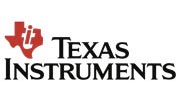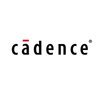
i
Lam Research
Filter interviews by
Lam Research Financial Analyst Interview Questions and Answers
Be the first one to contribute and help others!
Interview questions from similar companies

(2 Questions)
- Q1. What is Planning?
- Ans.
Planning is the process of setting goals, determining actions to achieve those goals, and allocating resources effectively.
Setting specific, measurable, achievable, relevant, and time-bound (SMART) goals
Creating a detailed plan of action to achieve the goals
Allocating resources such as time, money, and manpower efficiently
Monitoring progress and making adjustments as needed
Examples: Financial planning for a company's b...
- Q2. What to build financial model?
- Ans.
A financial model is built to forecast future financial performance of a company or project.
Identify the purpose of the financial model (e.g. budgeting, valuation, forecasting)
Gather historical financial data and relevant assumptions
Create income statement, balance sheet, and cash flow statement projections
Perform sensitivity analysis to assess the impact of different variables
Validate the model by comparing actual res
(2 Questions)
- Q1. What is depreciation?
- Ans.
Depreciation is the allocation of the cost of a tangible asset over its useful life.
Depreciation is a non-cash expense that reduces the value of an asset over time.
It reflects the wear and tear, obsolescence, or decrease in value of an asset.
Common methods of calculating depreciation include straight-line, double declining balance, and units of production.
Example: A company purchases a machine for $10,000 with a useful...
- Q2. What is the concept of budgeting?
- Ans.
Budgeting is the process of creating a plan to manage income and expenses over a specific period of time.
Budgeting involves setting financial goals and creating a detailed plan to achieve them.
It helps in tracking income, expenses, and savings to ensure financial stability.
Budgeting can be done on a personal level, for businesses, or for specific projects.
Examples of budgeting tools include spreadsheets, budgeting apps

(2 Questions)
- Q1. What is Planning?
- Ans.
Planning is the process of setting goals, determining actions to achieve those goals, and allocating resources effectively.
Setting specific, measurable, achievable, relevant, and time-bound (SMART) goals
Creating a detailed plan of action to achieve the goals
Allocating resources such as time, money, and manpower efficiently
Monitoring progress and making adjustments as needed
Examples: Financial planning for a company's b...
- Q2. What to build financial model?
- Ans.
A financial model is built to forecast future financial performance of a company or project.
Identify the purpose of the financial model (e.g. budgeting, valuation, forecasting)
Gather historical financial data and relevant assumptions
Create income statement, balance sheet, and cash flow statement projections
Perform sensitivity analysis to assess the impact of different variables
Validate the model by comparing actual res
(2 Questions)
- Q1. What is depreciation?
- Ans.
Depreciation is the allocation of the cost of a tangible asset over its useful life.
Depreciation is a non-cash expense that reduces the value of an asset over time.
It reflects the wear and tear, obsolescence, or decrease in value of an asset.
Common methods of calculating depreciation include straight-line, double declining balance, and units of production.
Example: A company purchases a machine for $10,000 with a useful...
- Q2. What is the concept of budgeting?
- Ans.
Budgeting is the process of creating a plan to manage income and expenses over a specific period of time.
Budgeting involves setting financial goals and creating a detailed plan to achieve them.
It helps in tracking income, expenses, and savings to ensure financial stability.
Budgeting can be done on a personal level, for businesses, or for specific projects.
Examples of budgeting tools include spreadsheets, budgeting apps
Tell us how to improve this page.
Lam Research Interviews By Designations
- Lam Research Electrical Engineer Interview Questions
- Lam Research Business Analyst Interview Questions
- Lam Research Engineering Manager Interview Questions
- Lam Research Software Engineer Interview Questions
- Lam Research Advanced Engineer Interview Questions
- Lam Research Business System Analyst Interview Questions
- Lam Research Configuration Engineer Interview Questions
- Lam Research Data Scientist Interview Questions
- Show more
Interview Questions for Popular Designations
- Financial Associate Interview Questions
- Financial Accountant Interview Questions
- Senior Financial Analyst Interview Questions
- Financial Controller Interview Questions
- Financial Consultant Interview Questions
- Financial Planning Analyst Interview Questions
- Financial Data Analyst Interview Questions
- Cheif Financial Officer Interview Questions
- Show more
Interview Questions from Similar Companies
Fast track your campus placements
|
Senior Buyer
56
salaries
| ₹8 L/yr - ₹16 L/yr |
|
Senior Engineer Mechanical
50
salaries
| ₹9 L/yr - ₹20.5 L/yr |
|
Senior Software Engineer
50
salaries
| ₹8.5 L/yr - ₹26 L/yr |
|
Design Engineer
47
salaries
| ₹3 L/yr - ₹13.8 L/yr |
|
Senior Electrical Engineer
40
salaries
| ₹9.5 L/yr - ₹20 L/yr |

Applied Materials

KLA

ASML

Entegris
Calculate your in-hand salary
- Home >
- Interviews >
- Lam Research Interview Questions >
- Lam Research Financial Analyst Interview Questions








